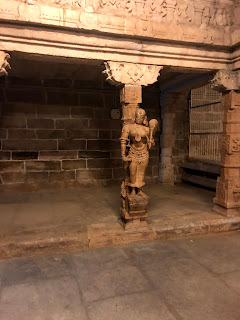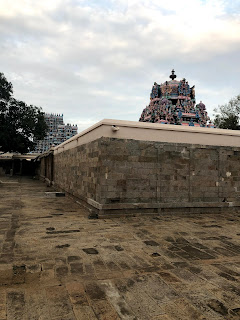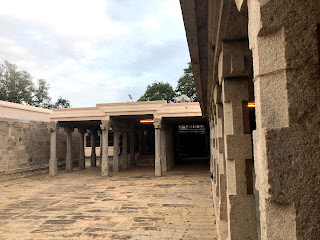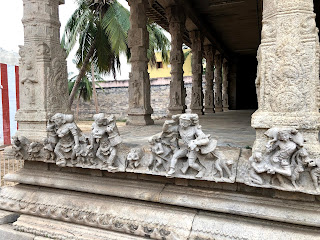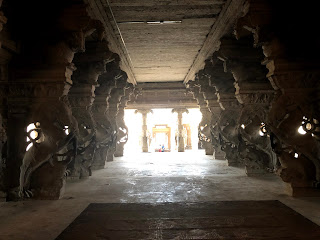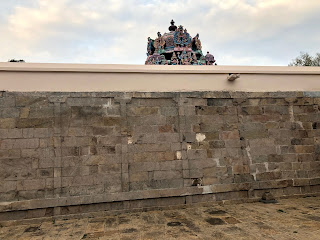The Temples of Tamil Nadu are important in many ways. For people who believe in the religion these are spiritual sanctuaries. For art lovers they are the repositories of great cultural wealth. For those with an interest in history they are invaluable sources of knowledge. For the curious and otherwise interested they are fascinating sites to explore. There are many reasons to visit these wonderful placers.
Visiting these temples are sometimes challenging and a knowledge of their peculiarities are essential to make your visit convenient, hassle-free and meaningful. This post is meant to familiarize the uninitiated to certain customs and cultural aspects related to these temples to make your visit pleasant. We think this will be of special use for foreigners and visitors who are unfamiliar wth the country. For locals it is part of their culture and they will know more than what is written here.
1. Timing:
When planning a trip to a temple or group of temples, it is very important to find out when the temple is open. Most temples open quite early in the morning. 6 am opening is common. Most temples will close their doors by noon. They will open again in the late afternoon between 4 pm and 6 pm and remain open till late at night. Most temples close around 9 pm. These are very general times and the exact opening and closing times for individual temples will vary and should be verified beforehand. Temples that are not active and are under the direct management of the archeological or heritage departments of the government might have more regular opening and closing times.
2. Special Days:
Prior knowledge of the astrologically important days will be useful in planning a visit. Most temples will be closed during an eclipse while others will be open. Special days for the temple or the deity will sometimes draw large crowds. For those who like to experience the special poojas, festivals and rituals, these days might be attractive. For others who are interested in experiencing these temples in peace and quiet and admire the art and architecture unhindered, a quiet day might be more attractive.
3. Attire:
Modest attire is recommended for active temples. For men long pants are fine. A Veshti or the traditional South Indian male lower garment may be appreciated but certainly not essential. Most temples will not allow shorts or the multicoloured lungi or sarong that is worn by men in some parts of South Asia. Jeans are not advisable. Women can wear any garment that covers the legs including a long skirt that is below the knee, a Chruridar, Kurta-pyjama or Punjabi Suit or any other traditional Indian garment. Saris are certainly not essential. If you use common sense you will be all right. Some one being rude to you on account of your attire can sometimes spoil a trip. In some parts, especially the deep south such as in Kanyakumari district men are sometimes asked to take off their upper garment such as a shirt and are required to be bare bodied waist up inside the temple. So be prepared to take your shirt off if you are male. In most others places wearing a shirt or T -Shirt is fine. The only other place that I know of is Chidambaram where men have to take their shirts off.
4. Behaviour:
This pertains to those who visit these places to experience the art and architecture and are non-Hindu or not religious. As the more active temples are places of worship to many including the local population, it is important to maintain a certain level respect and decorum. Soft speech and an unhurried manner are important inside temples.
5. Footwear:
Footwear are not allowed inside temples. Most locals will walk in with bare feet after taking off their footwear at the entrance. Some temples will have dedicated foot wear safety stations where a minder will look after your foot wear for a token sum. Many of the smaller temples do not have a designated station and you can leave it at the entrance or with one of the vendors if you buy something from them. It is better not to wear expensive footwear although I have never heard of anyone losing their shoes at a temple. If your feet are sensitive or you have any queasiness about walking bare feet, you could wear a pair of clean, cheap socks inside the temple which is all right and you can discard them after a few uses.
6. Photography:
Photography is generally frowned upon inside a temple. Lugging a big camera inside a temple is a sure ticket to being thrown out. You could unobtrusively take some pictures using a device such as a mobile phone. Even then, do not take pictures of the deities without express permission. You can take as many pictures as you want of the outside structures.
7. Touts:
Touts are ubiquitous in some temples. It is useful to know who a tout is to deal with them. A tout is a person, usually a man, who will approach you just as you are about to enter a temple. They might introduce themselves as guides and act as if they are part of the temple administration or someone appointed by them. They will offer to show you around the temple and quite often will not take no for an answer and will impose their services on you. If you ask them whether there is a fee, they will ignore the question. They are useful because they know the temple and its specialties, peculiarities, significance etc. They will have a good relationship with the priests and get you close to the inner sanctum. They are not always accurate with their facts as they are often not very educated and they are not licensed guides. They will demand a fee when you are done and will not name a fee. They will ask you to come up with an amount knowing fully well that you will not know what is appropriate. Whatever amount you come up with, they will demand more and will not let go till it is at least double what you initially offered. Most people get annoyed with this whole experience and it makes them angry. They hold it against the temple where as the temple has little to do with it. If you know about this practice ahead of time you can use it to your advantage or simply avoid it. If you want to use a tout, use them by all means because they are useful. When it comes to payment find out what the usual payment is and offer less and be prepared to pay a bit more.
8. Entry to Non-Hindus:
This is quite variable. Most temples have no restrictions. Some restrict entry to only Hindus to certain parts of the temple including the sanctum. It is actually a bit discriminatory as any Indian or Indian-looking person can enter as there is no verification process. It only ends up barring foreign looking people. However most temples will not restrict entry as long as the visitor is respectful of the customs.
9. Entry Fees:
Entry is free in temples. Some temples have a fee for fast lanes to the sanctum or to certain parts of the temple. However this is usually found in the more popular temples. It is essentially a crowd control mechanism as the crowds can become quite large and unmanageable in some of the well known temples. The lesser known temples usually do not have this problem. If you donate money through the many tills or Hundials, the money will go to the government which owns most temples. It is a form of revenue to the government and the collected funds may not benefit that particular temple or any temple for that matter. If you pay for a Pooja at the temple office at the entrance, the money will again go to the government Giving money to the priest is not condoned by the administration as they are salaried, although the salary is quite meagre. But giving a small sum of money to the priest will buy you goodwill. Paying a tout is entirely up to you. Professional guides are available at the more well known temples.
10. Beggars:
Beggars are ubiquitous at temple entrances. It is customary for temple devotees to give alms to beggars at the entrance. It is a long tradition and it is the belief of many that giving to the poor at a temple will bring them blessings. There is no obligation. Usually they will leave you alone if you ignore them. If you do give money, be discreet or you can get swarmed.
11. Time Allocation:
This depends on your interest, time available and the size of the temple. An hour is minimum and 3 hours are maximum time needed for most people.
Being aware of the cultural aspects and customs of these temples will better prepare you and make your visit pleasant without any untoward surprises.













